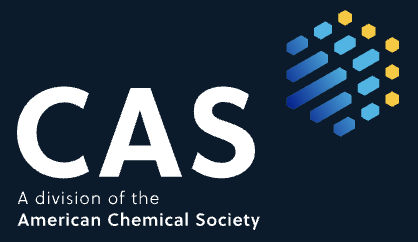The effect of dry needle treatment on sleep in fibromyalgia
Müge Kepekçi1, İlteriş Ahmet Şentürk2, İlker Geçmen3, Berna Ürkmez4, Özgür Taşpınar5, Uğur Arslan6, Hatice Melek Başar71Unıversity Of Health Science Kanuni Sultan Süleyman Research And Training Hospital, Department Of Physical Therapy And Rehabilitation2Unıversity Of Health Science Kanuni Sultan Süleyman Research And Training Hospital, Department Of Algology
3Unıversity Of Health Science Kanuni Sultan Süleyman Research And Training Hospital, Department Of Medical Ecology And Hydroclimatology
4Istanbul Haydarpasa Numune Training and Research Hospital
5Adakent University, Faculty Of Health Sciences, Department Of Physical Therapy And Rehabilitation
6Beylikduzu State Hospital, Department Of Physical Therapy And Rehabilitation
7Beylikduzu State Hospital, Department Of Psychiatry
INTRODUCTION: Our open-label clinical trial; to investigate the effect of dry needling on sleep problems in fibromyalgia patients with trigger points.
METHODS: Informed consent was obtained from a total of 100 patients with trigger points in the upper trapezius and rhomboid muscles under regular medical treatment followed by a diagnosis of fibromyalgia for at least six months in the outpatient clinic. All patients were evaluated with FEA (Fibromyalgia Impact Questionnaire), BDI (Beck Depression Scale), PUKI (Pittsburg Sleep Quality Index) and VAS (Visuel Pain Scale). The patients were divided into two groups by computer-assisted simple randomization. In the study group, 50 fibromyalgia patients with trigger points were given a total of three dry needle injections to the upper trapezius and rhomboid muscles three times a total of three weeks a week. 50 fibromyalgia patients with trigger points in the control group were not given any needling. One month after the first evaluation questionnaires of all patients (all of the study and control groups), the FEA, BDI, PUKI scores were checked again and the patients were questioned by VAS (Visuel Pain Scale).
RESULTS: There was a statistically significant difference in FEA, PUKI and VAS scores when the groups were compared in terms of change amounts (respectively; p<0.001, p=0.007 ve p=0.035).
DISCUSSION AND CONCLUSION: In our study, it was observed that dry nails applied to trigger points of fibromyalgia patients had a statistically significant contribution to patients in terms of FEA, PUKI and VAS values.
Fibromiyaljide Kuru İğne Tedavisinin Uyku Üzerine Etkisi
Müge Kepekçi1, İlteriş Ahmet Şentürk2, İlker Geçmen3, Berna Ürkmez4, Özgür Taşpınar5, Uğur Arslan6, Hatice Melek Başar71İstanbul Sağlık Bilimleri Üniversitesi Kanuni Sultan Süleyman Eğitim Ve Araştırma Hastanesi, Fiziksel Tıp Ve Rehabilitasyon Kliniği2İstanbul Sağlık Bilimleri Üniversitesi Kanuni Sultan Süleyman Eğitim Ve Araştırma Hastanesi, Algoloji Kliniği
3İstanbul Sağlık Bilimleri Üniversitesi Kanuni Sultan Süleyman Eğitim Ve Araştırma Hastanesi, Tıbbı Ekoloji Ve Hidroklimatoloji Kliniği
4İstanbul Haydarpaşa Numune Eğitim ve Araştırma Hastanesi
5Adakent Üniversitesi, Sağlık Bilimleri Fakültesi, Fizyoterapi Ve Rehabilitasyon Anabim Dalı
6Beylikdüzü Devlet Hastanesi, Fiziksel Tıp Ve Rehabilitasyon Kliniği
7Beylikdüzü Devlet Hastanesi,psikiyatri Kliniği
GİRİŞ ve AMAÇ: Açık etiketli klinik çalışmamız; tetik noktaları olan fibromyalji hastalarında kuru iğneleme yapılmasının uyku sorunları üzerine etkisinin araştırılması amacıyla yapıldı.
YÖNTEM ve GEREÇLER: Poliklinikte görülen en az altı aydır fibromiyalji tanısı ile takip edilmekte olan düzenli medikal tedavi altında bulunan üst trapez ve rhomboid kaslarında tetik noktaları olan toplamda 100 hastanın bilgilendirilmiş onamları alındı. Tüm hastalar öncelikle FEA (Fibromiyalji Etki Anketi), BDÖ (Beck Depresyon Ölçeği), PUKİ (Pittsburg Uyku Kalite İndeksi) ve VAS (Visuel Ağrı Skalası) ile değerlendirildi. Hastalar bilgisayar yardımlı basit randomizasyon ile iki gruba ayrıldı. Çalışma grubunda tetik noktaları olan 50 fibromiyalji hastasına birer hafta arayla toplamda 3 kez olmak üzere üst trapez ve rhomboid kaslarına toplamda kuru iğne uygulandı. Kontrol grubundaki tetik noktaları olan 50 fibromiyalji hastasına ise herhangi bir iğneleme yapılmadı. Tüm hastaların (tüm çalışma ve kontrol grupları) ilk değerlendirme anketlerinden bir ay sonra, FEA, BDI, PUKİ puanları tekrar kontrol edildi ve hastalar VAS (Visuel ağrı ölçeği) tarafından sorgulandı.
BULGULAR: Gruplar değişim miktarları yönünden karşılaştırıldığında, FEA, PUKİ ve VAS skorlarında istatistiksel olarak anlamlı farklılık vardı (sırasıyla; p<0.001, p=0.007 ve p=0.035).
TARTIŞMA ve SONUÇ: Çalışmamızda fibromiyalji hastalarının tetik noktalarına uygulanan kuru iğnelemenin; FEA, PUKİ ve VAS değerleri açısından hastalarda istatistiksel açıdan anlamlı katkısı olduğu görüldü.
Manuscript Language: Turkish






















